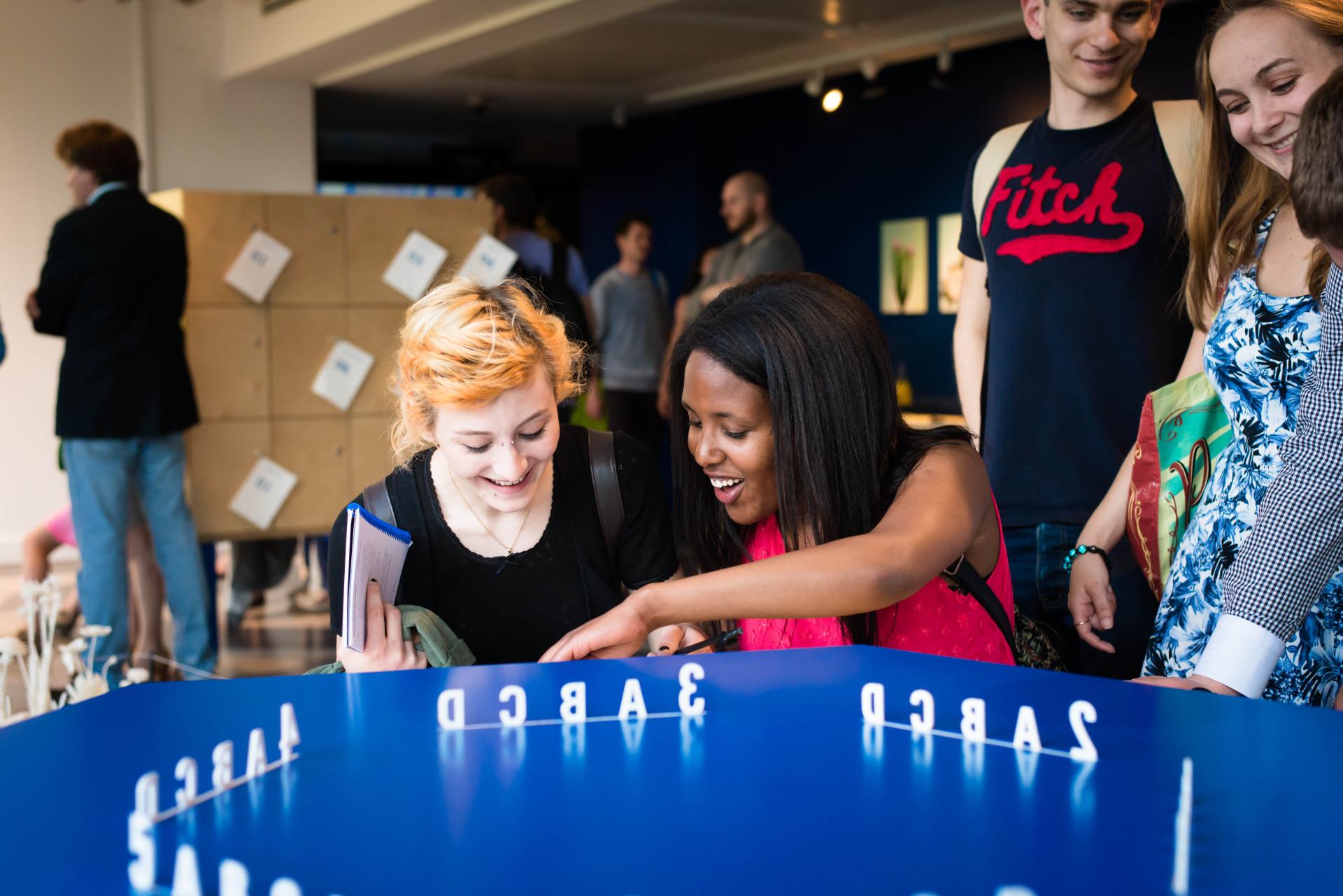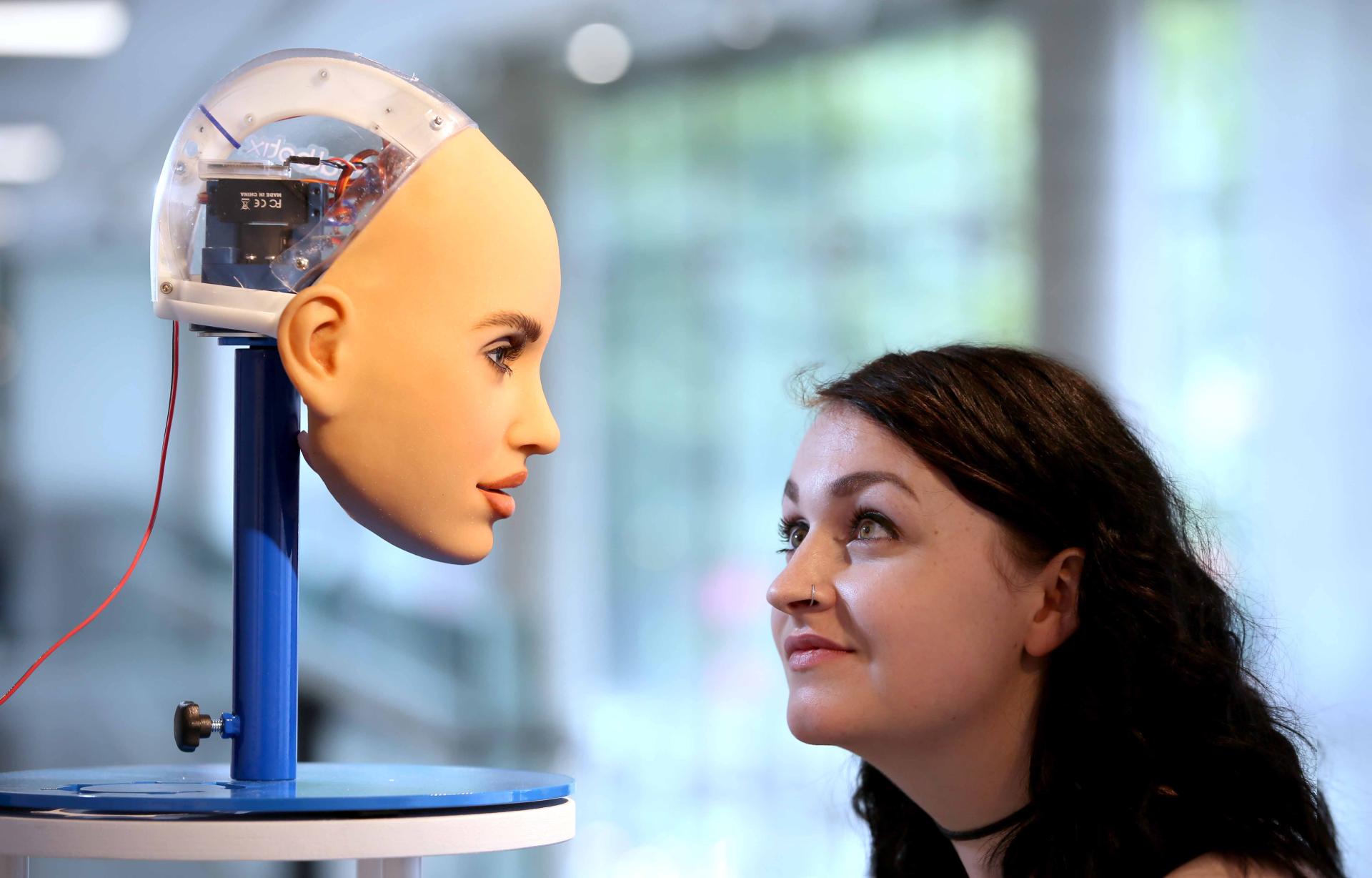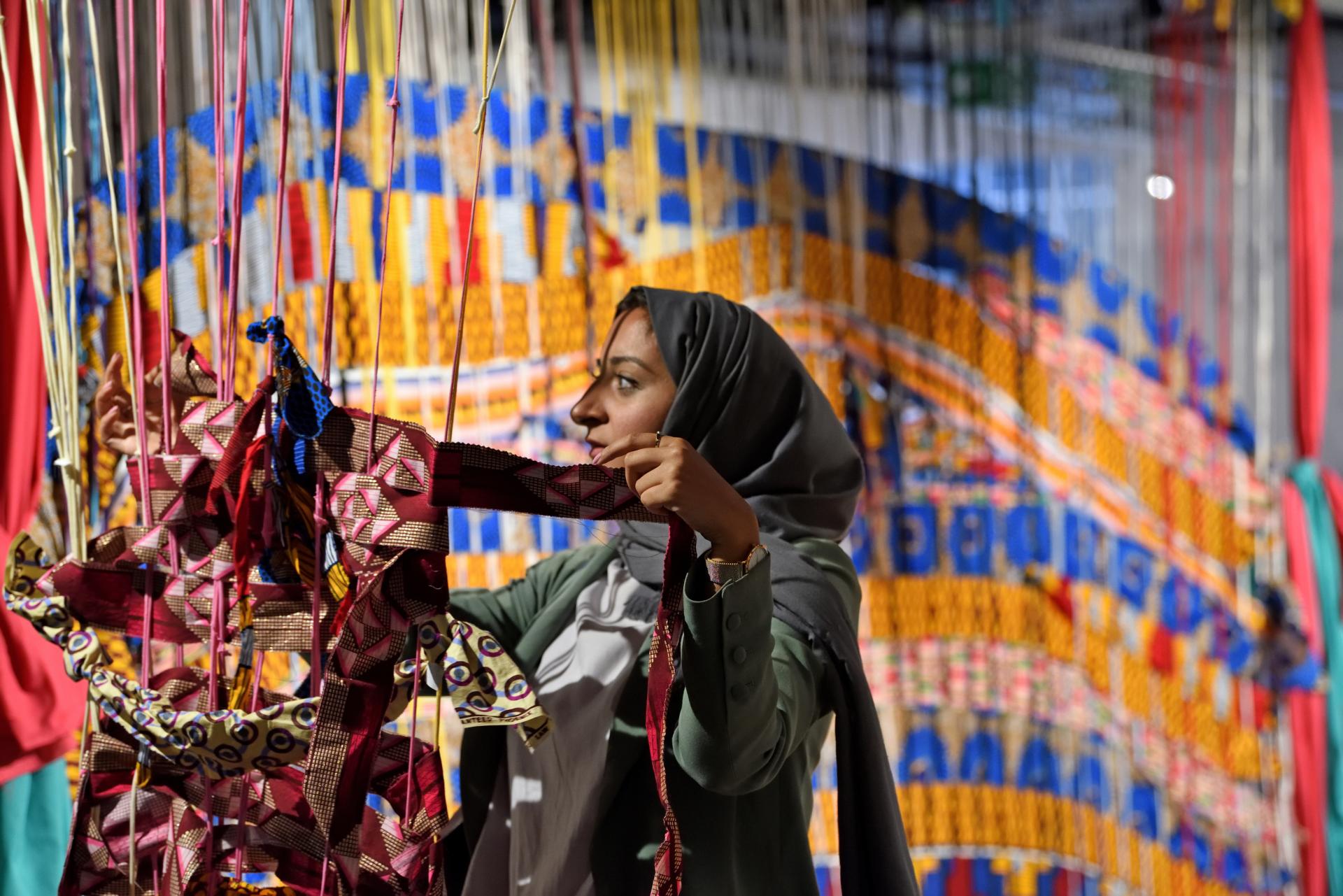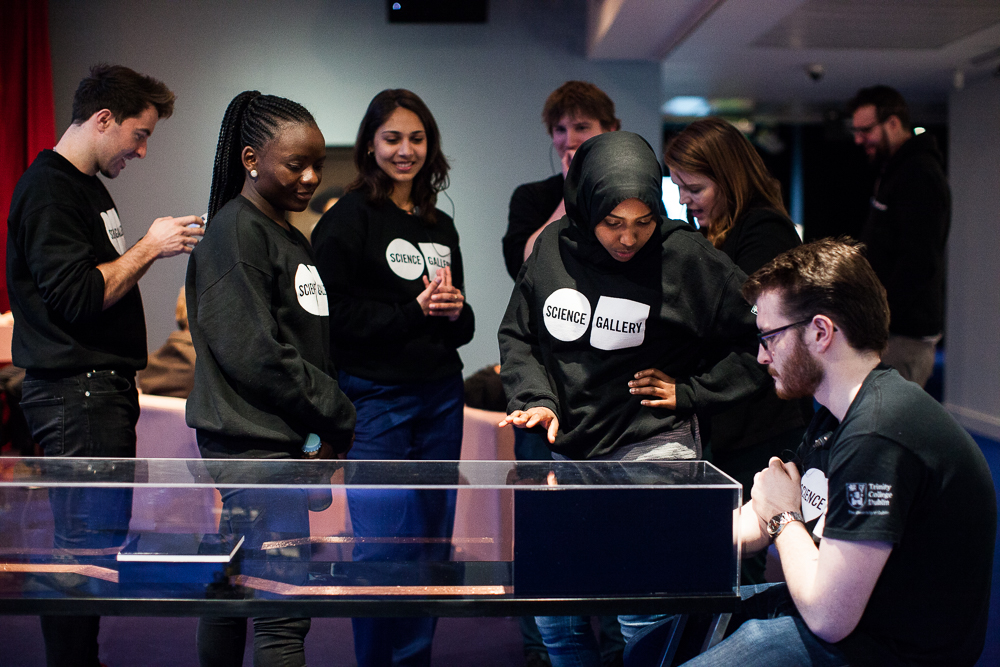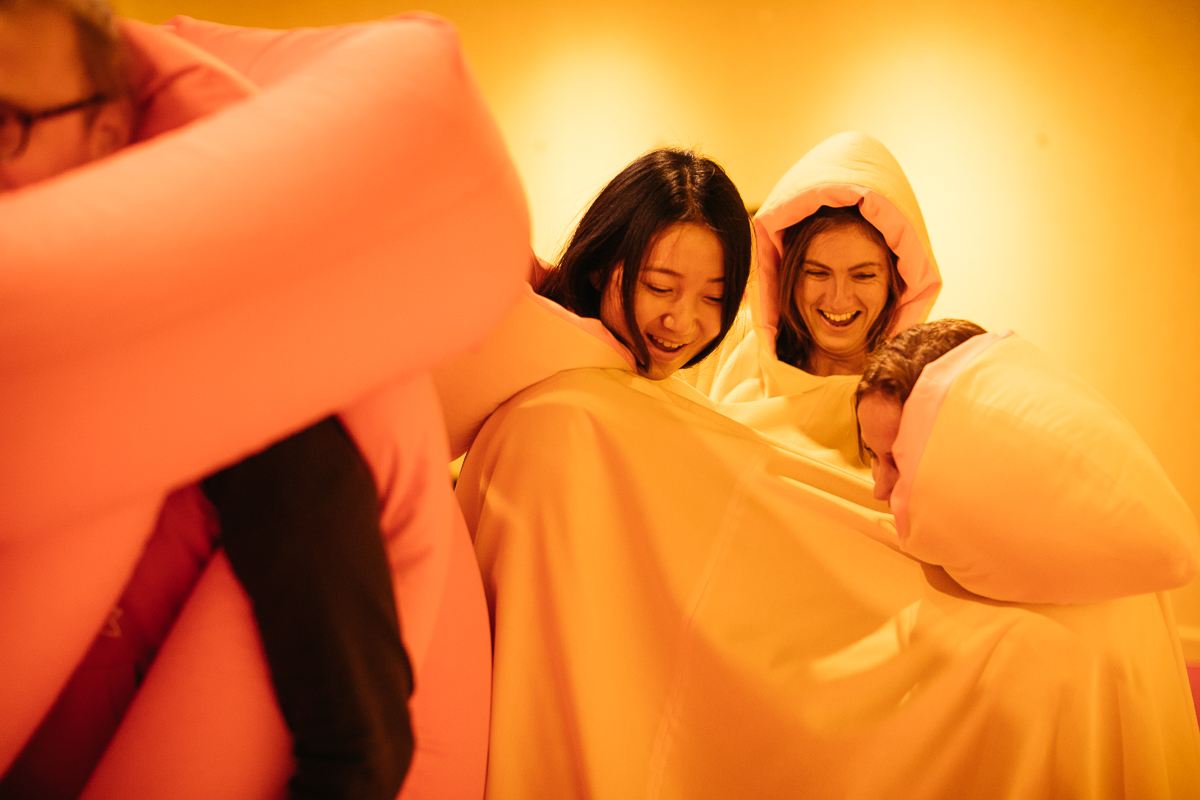Science Gallery
Basic information
Project Title
Full project title
Category
Project Description
Science Gallery ignites creativity and discovery where science and art collide. It develops an ever-changing programme of interactive exhibitions and events fuelled by the expertise of scientists, researchers, students, artists, designers, inventors, creative thinkers and entrepreneurs to encourage young people to learn through their interests. The focus is on providing experiences that allow visitors to participate and facilitate social connections, always providing an element of surprise.
Project Region
EU Programme or fund
Which funds
Other Funds
StudioLab - a new European platform for creative interactions between art and science (SiS-2010-3.0.3.1 - Science and the Arts: an experimental approach) 2011-2014
KiiCS - Knowledge Incubation in Innovation and Creation for Science (SiS.2011.1.3.4-1 - Clusters of cities of scientific culture for innovation) 2012-2015
TWIST - Towards Women In Science and Technology (SiS-2009-2.1.2.1 - Mobilising science centres and museums on women and science) 2010-2012
SySTEM 2020: Connecting Science Learning Outside The Classroom (SwafS-11-2017 - Science education outside the classroom; H2020-EU.5.d. - Encourage citizens to engage in science through formal and informal science education, and promote the diffusion of science-based activities, namely in science centres and through other appropriate channels) 2018-2021
SISCODE - Society in Innovation and Science through CODEsign (SwafS-13-2017 - Integrating Society in Science and Innovation – An approach to co-creation; H2020-EU.5.f. - Develop the governance for the advancement of responsible research and innovation by all stakeholders, which is sensitive to society needs and demands and promote an ethics framework for research and innovation
H2020-EU.5.c. - Integrate society in science and innovation issues, policies and activities in order to integrate citizens' interests and values and to increase the quality, relevance, social acceptability and sustainability of research and innovation outcomes in various fields of activity from social innovation to areas such as biotechnology and nanotechnology) 2018-2021
SpaceEU - Fostering a young, creative and inclusive European Space Community (H2020-EU.2.1.6. - INDUSTRIAL LEADERSHIP - Leadership in enabling and industrial technologies – Space DT-SPACE-08-BIZ-2018 - Space outreach and education) 2018-2020
TINKERING EU: Building Science Capital for ALL (Erasmus+ Cooperation for innovation and the exchange of good practices
Action Type: Strategic Partnerships for school education) 2017-2020
Description of the project
Summary
Established in 2008 Science Gallery at Trinity College Dublin delivers a cutting-edge programme that ignites creativity and discovery where science and art collide. The nonprofit gallery’s mission is to encourage young people to learn through their interests.
Since its opening, more than three million visitors to the gallery have experienced over 46 unique exhibitions ranging from design and violence to light and love, and from contagion and biomimicry to the futures of the human species and play. Science Gallery Dublin develops an ever-changing programme of exhibitions and events fuelled by the expertise of scientists, researchers, students, artists, designers, inventors, creative thinkers and entrepreneurs. The focus is on providing programmes and experiences that allow visitors – particularly 15 to 25 year olds – to participate and facilitate social connections, always providing an element of surprise.
The success of Science Gallery Dublin’s transdisciplinary approach to education and innovation inspired the creation of the Science Gallery Network, consisting of leading universities united around the mission of colliding science and art. The nine galleries of the Science Gallery Network are committed to bringing science, art, technology and design together to deliver world-class educational and cultural experiences for young people around the world, forming the world’s only university network dedicated to public engagement with science and art.
Science Gallery ignites a passion in young people for new ideas and areas of study that can help to guide their career and educational choice, equipping them with resilience, empathy and ethical understanding to thrive in the knowledge economy.
Key objectives for sustainability
Sustainability is imperative to Science Gallery, and our strong commitment to being environmentally conscious at every level of the institution is clear. Sustainability as a practice is central to the development of our programmes and exhibitions, in order to educate and raise awareness of key issues. From our exhibition PLASTIC, which interrogated our current and future relationship with the material, to examining a sustainable food system in FIELD TEST and tackling climate change in STRANGE WEATHER, sustainability is a horizontal theme throughout many of our exhibitions. These exhibitions are not only opportunities to engage the public on these crucial issues, but also serve as key learning experiences where we can continue to push the boundaries of being a sustainable organisation: creating completely reusable 3D exhibition design, recycling and upcycling building materials, offering materials to the local community instead of sending to landfill. As our exhibitions are ever-changing and we house no permanent collection, there is no need for storage, providing a level of institutional sustainability. After each exhibition all artworks are returned to the artists or scientists who created them and can be shown elsewhere, allowing for a circular approach to culture. This circular approach is also amplified across the Science Gallery Network, where ideas and artworks are circulated in sustainable ways. Education initiatives such as the annual Science Gallery Youth Symposium connect hundreds of young people across the world in virtual formats, eliminating tonnes of potential emissions.
Key objectives for aesthetics and quality
The most important issues at the intersection of art and science are contemporary and rapidly evolving. They are being discussed and debated in multiple fora and audiences may be experiencing simultaneous conflicting narratives, and this is where empathising and understanding our audience's experience has been essential. In scenarios where Science Gallery produces an exhibition that taps into a cultural zeitgeist, it has been essential to survey the pop culture and communication landscape shaping our audience’s experience of the topic.
Exhibitions create a platform and a context to have those calm, constructive and even uncomfortable conversations on the kind of future we want among multiple stakeholders reconciling opposing views. Through art Science Gallery develops cognitive and emotional tools to imagine the future and achieve creative breakthroughs; differences are not seen as threats but as new frontiers of human connections, which helps to build empathy. By preparing ourselves for possible futures, we also become more resilient and learn to absorb the shocks of the impossible and think of it as real. We learn to question the foundations of our own world views.
In the pursuit of engagement, our professional field may have overemphasised the simple-sounding promise of participation, and under-emphasised the power of empathy and ethnographic methods. To simply give our audiences what they ask for would absolve us of the more difficult task of walking a mile in their shoes and trying to understand their experience and environment. Furthermore, it may contribute to giving audiences familiar and unchallenging narratives.
Key objectives for inclusion
Inclusion lies at the heart of everything Science Gallery does. Our focus on 15-25 year olds ensures that a typically forgotten age-group for cultural initiatives – often focusing on young children or adults – are catered for with our programming. Our panel of youth advisers is a mechanism to ensure their voices are being included in the development of all of our activities. Our Transition Year initiatives ensure at least 50% participation from DEIS schools, addressing the educational needs of children and young people from disadvantaged communities. Gender balance and encouraging girls and women to consider STEM subjects remains at the forefront of all of our activities. At the core of our programming lies inclusion too; our exhibitions are created using an international open call process that is open to anybody, with equal consideration given to projects created by students and young people to those created by established artists and scientists. Diverse communities are listened to and celebrated at Science Gallery, and we see the results of that reflected in the stats from our open calls and evaluations: 10% of participants in our open calls list themselves as non-binary. And twice as many Science Gallery visitors marked themselves as LGBT on an exit survey when compared to other educational initiatives in Dublin. Our Rapid Residences program is a quick response action to increase representation and opportunities for people of colour in the arts and creative industries. Our mediators have completed programmes that empower them to cater specifically for often-overlooked groups such as the deaf community or those on the autism spectrum. Science Gallery has consistently championed the voices of migrants, and highlighted the inadequacies of Ireland’s system for housing asylum seekers. We engage with community centres to ensure our neighbours and local communities feel encouraged to be a part of Science Gallery and truly participate in education and culture.
Results in relation to category
We developed a new curriculum and course at Trinity College Dublin called the Idea Translation Lab (ITL), where students work at the boundaries of art, science & engineering to develop original ideas and projects where these disciplines meet. ITL is a cross-disciplinary course stimulating the development of entrepreneurial, creative and critical thinking skills through collaborative group projects. The module aims to equip students with skills beyond their disciplinary boundaries and to develop creative project ideas, applying both design and entrepreneurial skills to produce projects with real world outcomes, which may have impact along different axes: social, scientific, cultural and commercial. The themes for each iteration of this elective module align with the theme of a current or future Science Gallery exhibition.
Science Gallery participated in the Google Field Trips programme to great success. In 2017, for example, over 4,000 students visited the gallery from 17 different counties in Ireland. There were 243 tours provided to 99 different schools and educational organisations. More than 50% of the students were female and more than 50% of the students were from DEIS or disadvantaged schools. For at least 60% of these students it was their first time interacting with Science Gallery.
In a Trinity College entrance survey, over 10% of new students listed Science Gallery as an important factor in their decision to choose to study at Trinity.
Science Gallery works to impact educational policy, and has provided input to the National Education Committee, National Council for Curriculum Assessment, Pedagogical Content Knowledge, and the President of Ireland Ethics Initiative. Science Gallery is one of 12 non-formal science education organisations providing non-traditional and innovative CPD for STEM teachers in the Junior Cycle, delivering workshops to teachers that explore creative ways to bring transdisciplinary, problem-based learning to the classroom.
How Citizens benefit
Science Gallery has changed the fabric of the city centre in Dublin. In 2008 it opened on the former site of an abandoned car park, and with no admission charge it transformed a desolate area into a vibrant education and culture space that welcomed the entire city. Science Gallery provides the local community with a space to gather around the inspirational creativity that sparks out of the collision of art and science. In parallel, we work to forge new social connections — between mediator staff, visitors, peers, scientists, researchers and artists. For many people Science Gallery acts as a meeting place, where people and ideas collide. Outside of the gallery space, Makeshop, a makerspace, pioneered a pop-up retail approach to education and culture.
A key part of the Science Gallery programme is facilitating real research being carried out in the gallery. Visitors are invited to take part in this research — contributing data, samples, opinions, etc. — and, in doing so, contribute to important research across a range of scientific disciplines. This is a compelling experience for the visitor because they gain a unique insight into the scientific process, and it is also useful to the researcher, who gains access to a large cohort of willing subjects eager to contribute and to learn about their work.
Innovative character
Whilst there are many organisations worldwide aiming to engage young people with science, there are many factors that set Science Gallery apart:
Being located on the campus of leading universities and research institutions in major urban centres, Science Gallery brings research groups, staff and students into dialogue with the arts, creative community and the public. Exhibitions are staffed by student mediators and educational programmes offer young people the opportunity to pursue projects that explore the boundaries of art and science.
We are created for young adults. While other attractions focus on kids or adults, the primary Science Gallery audience is aged between 15 and 25 years old — young adults who are in high school, university and in the early stages of their career. Science Gallery understands this audience and presents them with the opportunity to engage with new ideas when they are making key decisions about future course choices and careers.
Our Open Call process allows anyone, artists, scientists, engineers, technologists from all over the world to submit their ideas, effectively crowdsourcing its programme. This makes each exhibition a truly unique, multidisciplinary and diverse collection of ideas.
Science Gallery Mediators are the superheroes of Science Gallery, a multi-talented team of young STEAM educators who discuss and debate the themes explored in our exhibitions with visitors to Science Gallery. Their primary role is to engage people in conversations catalysed by our exhibitions, events and education programmes. The Science Gallery Mediator model empowers young people to master the 21st century skills they will need to succeed in the future.
Our transdisciplinary approach to science and art ensures that Science Gallery is a place where the usual rules don’t apply, where radical experimentation can occur and where genuinely disruptive innovations can be developed through the collision of different ideas and perspectives.

